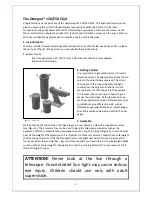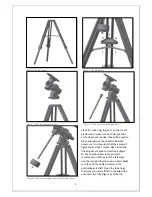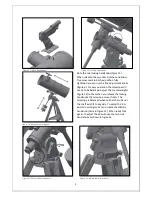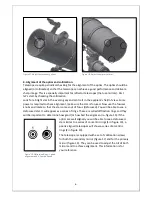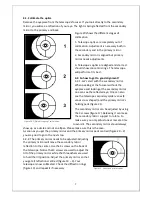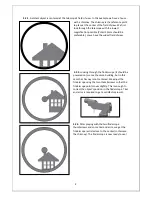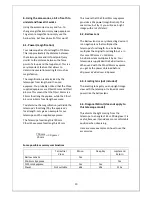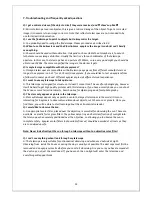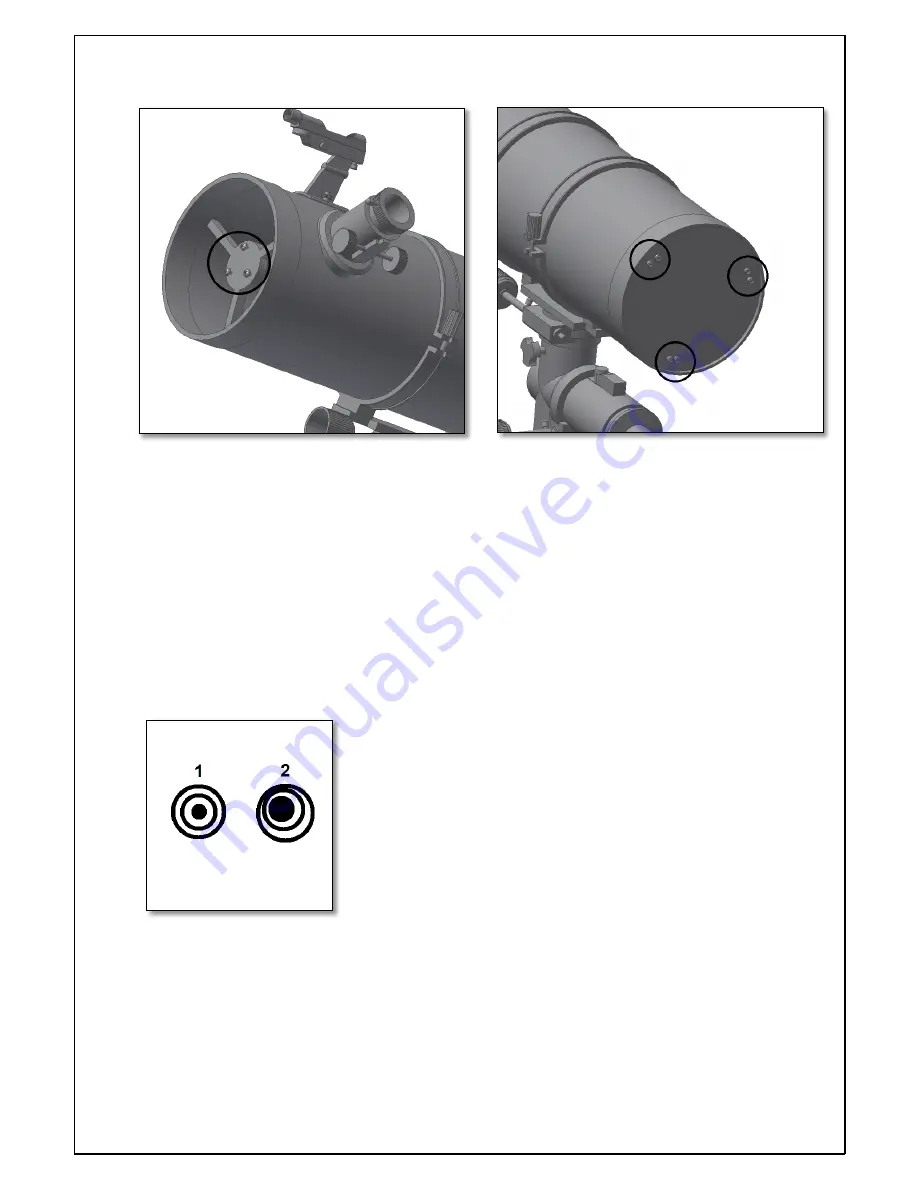
6
4. Alignment of the optics and collimation.
Telescopes require periodical checking for the alignment of the optics. The optics should be
aligned (or collimated) so that the telescope can achieve a good performance and deliver a
sharp image. This is especially important for reflector telescopes (that use mirrors). First
let’s start by checking the collimation.
Look for a bright star in the evening sky and centre it in the eyepiece’s field of view. Some
power is required to check alignment, make sure the star is focused. Now use the focuser
knobs and rotate so that the star comes out of focus (defocused). You will be able to see a
defocused star. It will appear as a series of rings. These are called diffraction rings and they
will be important to determine how good (or how bad the alignment is– figure 19). If the
optics are well aligned you will be able to see a defocused
star similar to a series of concentric rings (1 in figure 19), a
poorly aligned telescopes will show a series of eccentric
rings (2 in figure 19).
The telescope is equipped with a set of collimation screws
for both the secondary mirror (figure 17) and for the primary
mirror (figure 18). They can be used to adjust the tilt of both
mirrors and to achieve alignment. This information is for
your reference.
Figure 17. Adjust the secondary mirror.
Figure 18. Adjust the primary mirror.
Figure 19. Diffraction Rings: 1. good
alignment and 2. Poorly aligned


